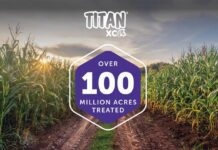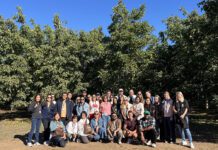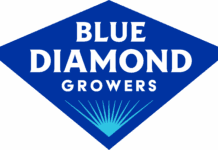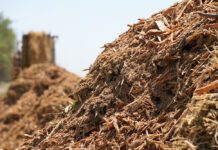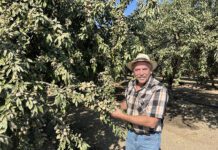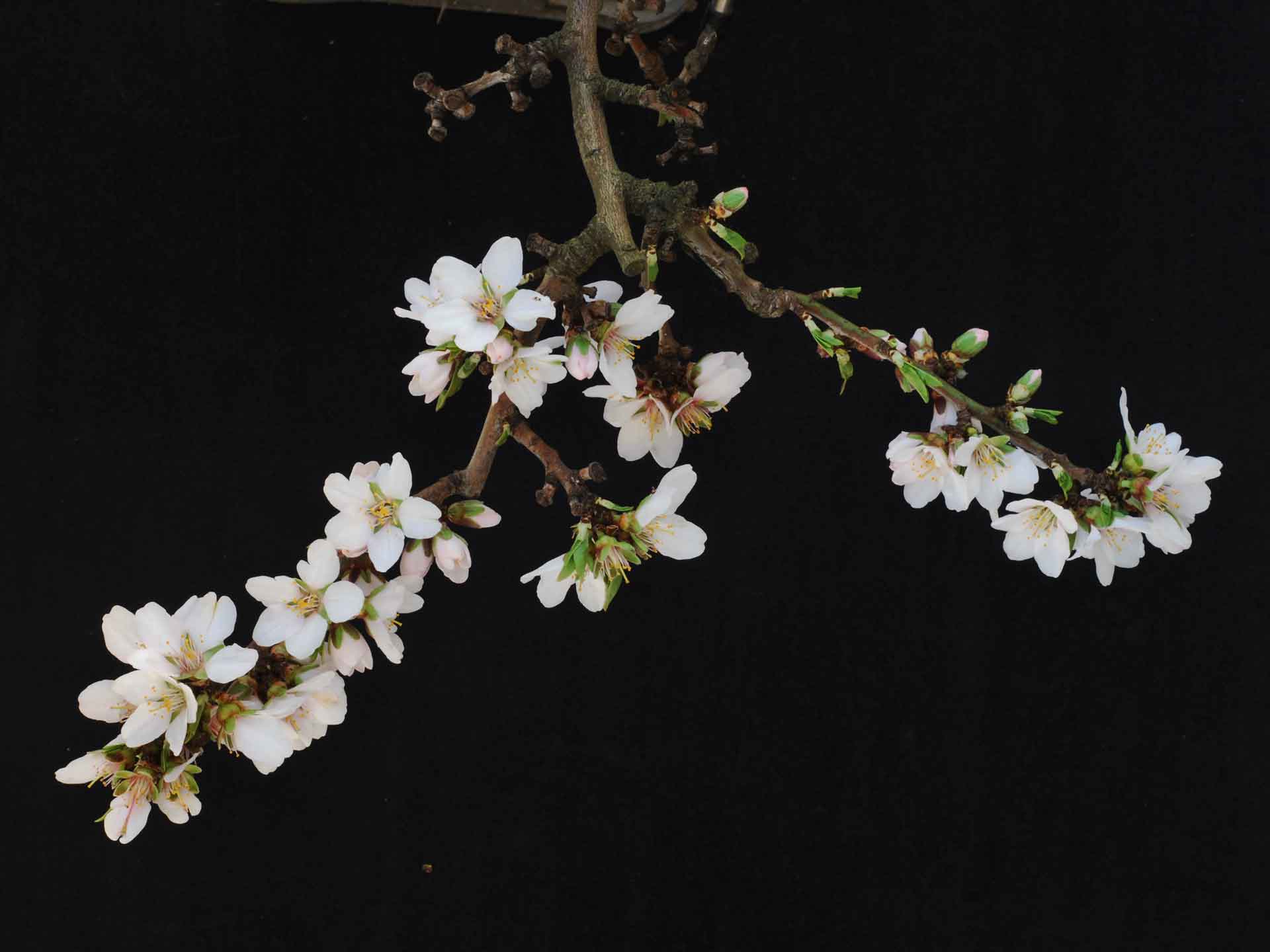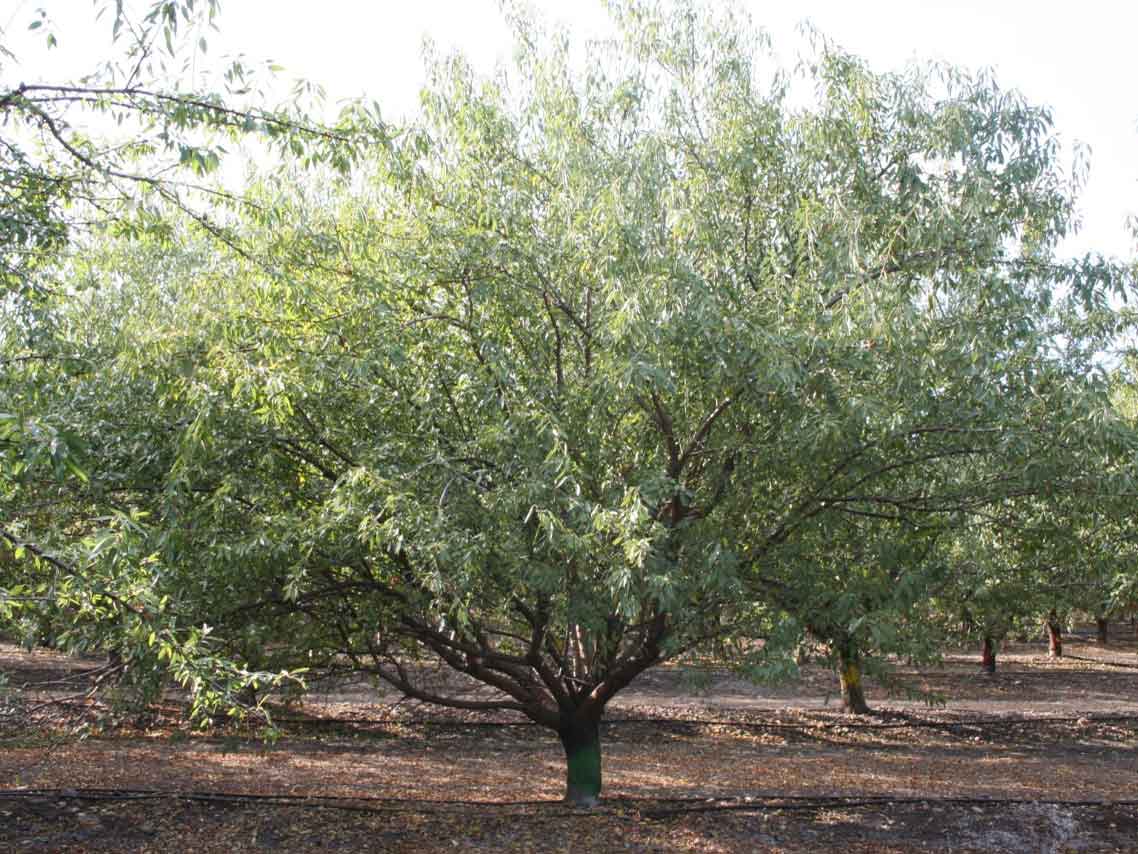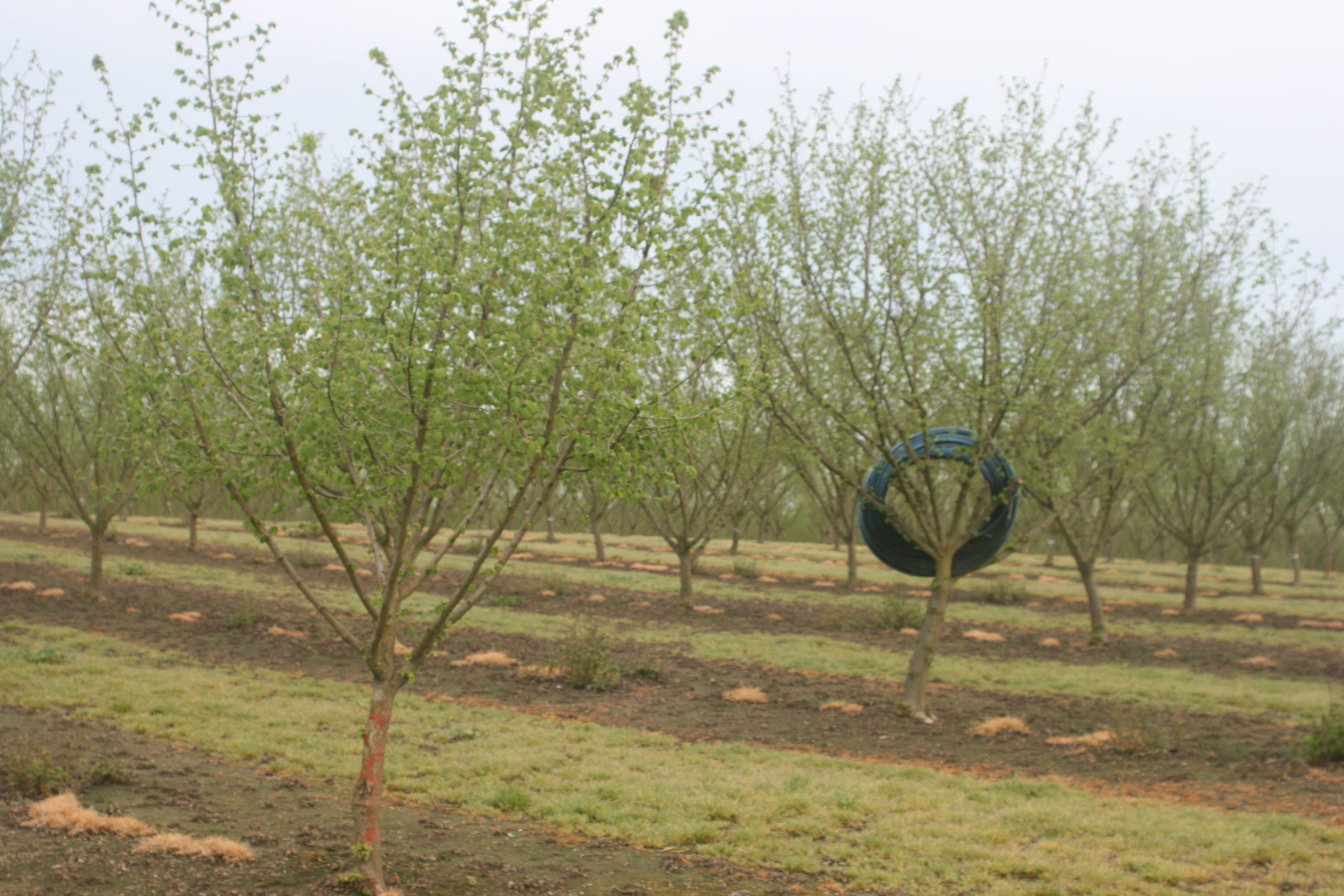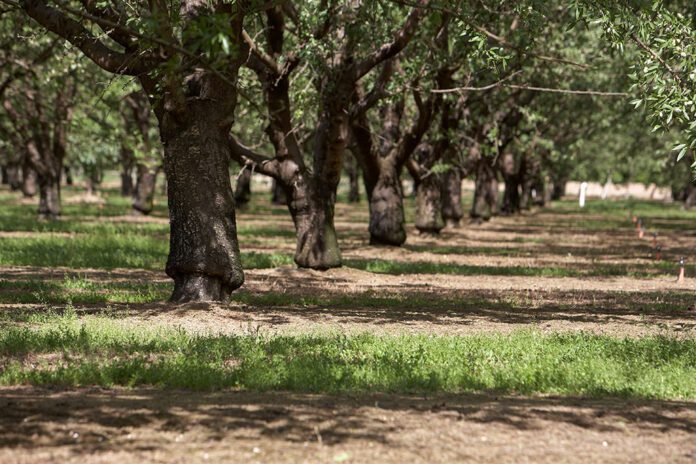
One of the most valuable assets the almond industry has at its fingertips is the insights gathered through focused research and exploration. Years of trial and error have led to discoveries on best practices, all while helping growers make better informed decisions. However, there’s always work to be done.
That’s why the Almond Board of California (ABC) has invested in research that explores ways to increase efficiencies, boost production and keep money in the pockets of growers.
“One of the pillars of our production research portfolio is to generate new knowledge and discover innovative methods for growing almonds in California,” said Sebastian Saa, associate director, agricultural research at ABC. “This approach aims to reduce input costs by maximizing the efficiency of our current practices or introducing new ones.”
Below are just a few of the research projects ABC has been involved with to advance these efforts.
To Prune or Not to Prune
The debate on whether to prune almond trees has been a long-standing topic within the industry. Numerous studies throughout the state have been performed to examine this topic, taking into consideration outside factors such as geographical area, climate, cost and production levels.
Roger Duncan, Stanislaus County UCCE farm advisor emeritus, explained based on both long- and short-term trials, there is no significant difference in yields for orchards that were trained vs orchards that were untrained. In fact, in some varieties like Carmel, yields increased when the trees were not pruned.
Not only is there no difference in yield, but the difference in cost is vast. In one specific trial done in Stanislaus County, Duncan and his team found pruning would have likely cost a grower anywhere from $7,500 to $14,000 per acre over a 19-year time span.
“The bottom line is, if you’re not going to improve your yield in the short-term or long-term, then why are you spending $300 to $400 [per acre] doing that?” Duncan said.
What does this mean for growers? Because pruning has no benefit to the crop and is an additional cost, Duncan suggested growers only prune if there is a true need, like if the structural integrity of the tree is being compromised or it is a hazard for farm workers and equipment.
Tree Spacing
Another topic widely discussed in the industry is how far apart trees should be spaced. Are closer plantings more conducive for tree growth and productivity, or should they be spaced farther apart?
To answer that question, Duncan and his team worked through a 22-year trial analyzing four different variations of spacing dimensions: 10 feet by 22 feet, 14 feet by 22 feet, 18 feet by 22 feet and 22 feet by 22 feet.
The results showed that spacing had very little impact on cumulative yields and the farther apart the trees were spaced, the less sunshine those trees were capturing and the less yield. It also indicated that when the trees are planted closer together, they end up smaller, which has some major benefits.
There is a direct correlation between less scaffold-breaking with smaller, tighter spaced trees and less trunk damage because they are easier to shake. When the trees are easier to shake, a grower can also expect less mummies left on their trees, leading to better health of the orchard and longer life of the tree.
Lastly, Duncan’s research also shows that the farther apart the trees, the more replants are needed, ultimately impacting a grower’s bottom line.
Utilizing Technology to Answer Questions
The two aforementioned field trials were extremely valuable for the industry, but the one downside is it took years, even decades in some circumstances, to get to these conclusions.
That’s why Brian Bailey and the team at UC Davis are looking at a simulation that would accelerate this process. This 3D-modeling framework, named Helios, is designed to give growers answers to their questions but isn’t intended to replace field trials altogether. Rather, it’s meant to look at various scenarios with different combinations to narrow down which are actually worth pursuing.
Helios also builds out the orientation of the orchard and allows variables to be compared, such as light perception and water use efficiency. Additionally, the experts behind Helios are exploring more broad applications, including orchard configuration design, irrigation system design and management and pruning/thinning. Interested growers are encouraged to visit the UC Davis Plant Simulation Laboratory website at baileylab.ucdavis.edu.
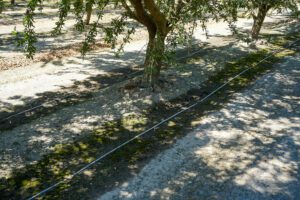
Nickels Soil Lab Projects
The Nickels Soil Lab in Colusa County has been a great partner to conduct real-world field trials and explore the important questions of researchers and growers. The following highlights recent trials occurring at the Nickels Soil Lab.
Self-Fertile vs Traditional Varieties
One of the projects in the works at the Nickels Soils Lab is looking at the performance of a 100% Independence orchard versus an orchard containing 50% Nonpareil, 25% Aldrich and 25% Sonora. The orchards were given all the same growing conditions, including rootstock, spacing, irrigation and planting date.
Franz Niederholzer, UCCE farm advisor in Colusa County and research coordinator at the Nickels Soil Lab, said one of the key trends they witnessed from 2015-2023 is production levels remained consistent in the Independence orchard, despite adverse bloom and spring weather. The traditional varieties, on the other hand, experienced notable variation because of these weather fluctuations.
Profits from each orchard, however, did not see any drastic disparities.
“When you add up income over time, there is no significant difference statistically,” Niederholzer said. “It’s all been different, so to say there was one absolute winner, there isn’t one.”
Planting Organic in the Sacramento Valley
Another study being researched at the Nickels Soil Lab analyzed how organic trees in the Sacramento Valley perform versus conventional trees. Planted in the spring of 2006, the team compared two orchards using the same growing factors: 75% nonpareil, 25% Fritz, double-line buried drip, spaced 16 feet by 22 feet.
They found in its early years, the organic yield was 60% to 80% of the conventional yield, likely due to leaf rust. Once controlled, production increased, but it ultimately affected nitrogen uptake and cost because of how expensive organic nitrogen is.
As of late, they have tried out a dry organic fertilizer to minimize costs, inserted in the ground using a shank. One of the downsides, Niederholzer said, is it does mess up the orchard floor, so there may be a need for catchframe harvesters if this becomes a standard practice when harvesting organic almonds.
Fertigation Methods
A huge focal point behind the research funded by ABC is the need and desire to be more efficient. N application, for example, is necessary for success of an orchard, but how to make use of it efficiently is still a work in progress.
Research shows that nitrates move through the soil very rapidly, and as you increase application, uptake of nutrients from the soil is not uniform. For example, if fertigation is infrequent and application exceeds a certain rate, saturation can occur causing waste or leaching.
“A large proportion of that nitrogen will sit in the root zone waiting for the plant to catch up,” said Patrick Brown, plant sciences professor at UC Davis. “This is an important principle because it underlies where and how inefficiencies occur.”
The most effective way to ensure N stays within the active root zone is with spoon-feeding trees. This method is known as episodic fertigation (fertilizing once every month to two months) versus continuous fertigation (fertilizing with every irrigation).
Growers are encouraged to visit ABC’s California Almond Stewardship Platform (almondstewardship.org), where custom inputs can be entered to better understand the relationship between irrigation and fertigation on individual operations.
The Complex Relationship Between Fertigation and Irrigation
When a grower applies N to their orchard, they must consider how that N is being accounted for. For almonds, it ends up in three places.
“Either it goes into the tree and into your fruit, or into the atmosphere, or it leaches to groundwater,” said Thomas Harter, professor and specialist in cooperative extension at UC Davis.
The impact from that can be substantial. Atmospheric losses affect greenhouse gas emissions and groundwater leeching, which was one of the driving factors behind the Irrigated Lands Regulatory Program.
“Your agricultural quality coalitions have worked with the regulatory agencies and the Central Valley Regional Water Board in developing targets for nitrogen losses that will, in the future, be protective of groundwater quality to ensure that we sustain or improve the quality of groundwater,” Harter said.
Meeting these targets is going to be necessary for all commodities, and the almond industry has been proactive in starting the process early.
With the help of ABC, a groundwater monitoring well network was established in 2017 on 140 acres in Stanislaus County. The purpose was to look at water and N movement in the rootzone and just below the rootzone, water and N transpiration, and how methods like spoon-feeding trees can reduce N losses.
The outcome was positive, indicating when switched to a high-frequency, low-concentration N application through drip or microsprinklers, N use efficiency increased from 68% to 85%.
“That means the losses have been reduced from 32% to 15%,” Harter said. “That’s a huge difference.”
They also witnessed lower nitrate concentrations, especially toward the end of the season, and a lower mass of nitrogen in soil samples because of this management practice.
Because irrigation would happen at a very efficient rate, water is moving very slowly below the root zone to the water table, so groundwater quality changes are not expected for one to two decades, Harter reported.
As the almond industry evolves and changes, research will be instrumental in setting growers up for success and ensuring that growing almonds remains a profitable and environmentally sound business. ABC supports these initiatives and is committed to bringing innovation and collaboration to the California almond industry through continued research.





